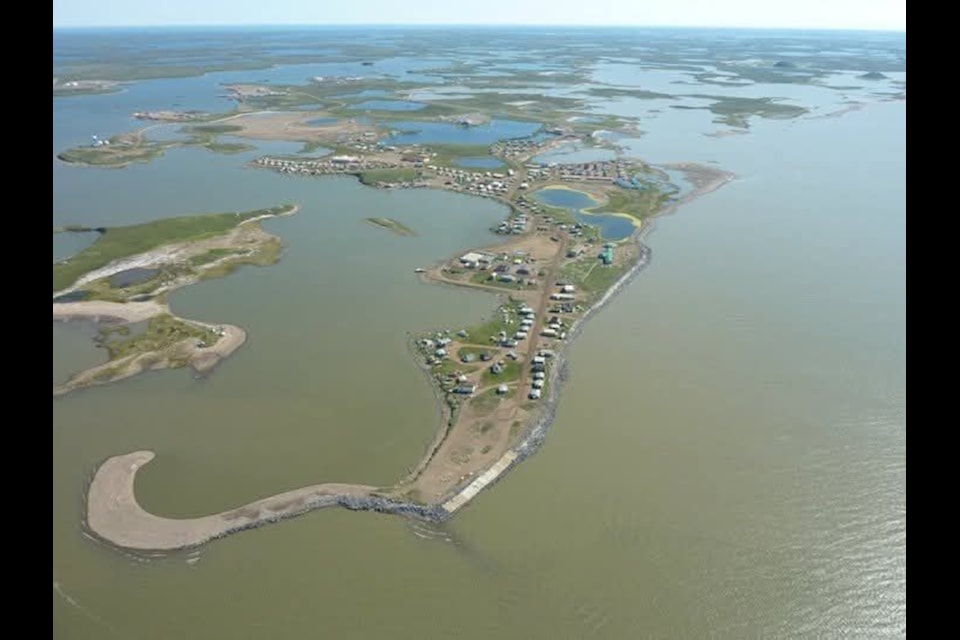A celebration is set for July 26 in Tuktoyaktuk as the community has completed its first coastline mitigation project on schedule.
Mayor Erwin Elias said the last of the rock wall "armour" to be installed along a kilometre of coastline was completed in May before the summer thaw was finished.
"It's a historic event here," he said. "Our number one priority was to protect the community. The community took on a huge commitment from the federal government and we were able to pull it off.
"It shows that small communities like this can take on something of this significance and we can do it within our own means."
A milestone eight years in the making, the Tuktoyaktuk Coastline Remediation Project was initially deemed necessary by coastal erosion experts, noting the shore along the Arctic Ocean was rapidly receding each summer as climate change reduced the volume of "land-fast ice," which covers both the coastline and surrounding water each season.
Elias said the hamlet submitted a proposal to the federal government roughly three years ago. Several months later, the $53.7-million initiative was approved, and Elias said the community was beaming with pride to have completed the project on time.
"I think if we didn't do anything, we'd be in pretty bad shape going forward," he said. "We stayed within budget. We finished in two years. It's a huge accomplishment for our community... When you get approved to do a project, in my view, you need to get it done. What we're seeing with inflation and tariffs and the whole nine years, the money is not the same as it was three years ago."
As big of a celebration as this is, Elias noted that the real work still lies ahead. Now that the first project is complete and the file is closed, the plan is to seek more federal funding to protect more shoreline.
Among areas still needing to be shielded are the inner harbour bay and many more kilometres of shoreline.
The mayor pointed out that the hamlet will have to continue moving buildings inland, which he noted has been an ongoing effort for the past half-century. But with the effects of climate change, Elias said the extra time the shoreline protection project has bought the hamlet is sorely needed.
He acknowledged that the community was in a losing battle with nature and will ultimately have to relocate, noting infrastructure in Tuktoyaktuk does not hold up to weather the way it used to.
"Relocation has been happening for 40 years in Tuk," he said. "Five years ago, we moved some houses from The Point to Reindeer Point. We're in the very early stages, but it's a very sensitive timeline.
"I'm not sure 'relocation' is the word we want to use today, but it's inevitable. The message that was sent five years ago was that in 30 to 50 years, Tuk will be totally covered in water. In that five years, we've seen changes. Climate change is definitely real and we can see it ourselves in the community.
"In the past, we'd have 80 to 100 kilometre an hour winds and we'd still be OK. Today, we get 60 to 70 kilometre an hour winds and we need to be very cautious and making sure we have our roads upgraded so we can have a safe exit out of the community if something happens.
"There's a lot of moving parts right now."

.png;w=120;h=80;mode=crop)

